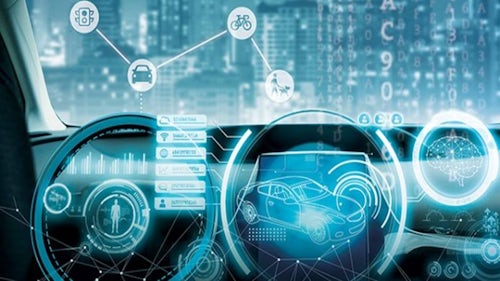Reduce risks and costs in autonomous vehicle development with product validation
Never before has the need to perform verification and validation (V&V) continuously throughout development been imperative to a project's success, as millions of test scenarios are simulated during autonomous vehicle development. However, mechanical, electrical, and software interactions create a complexity that can bring development to a screeching halt and cost companies their competitive advantage if ignored. Developers must work with software systems that speak the same language, so automakers can stay competitive in a rapidly growing marketplace by being fast, reliable, and consistent.
Model-Based Systems Engineering (MBSE), as CIMdata illustrates in this brief, is the most effective way for automakers to maximize efficiency through verification and validation throughout the entire development process.
Use MBSE to tackle the complexities in autonomous vehicle development
Consumers demand technologically advanced, safe, and reliable driving experiences wrapped in a good-looking vehicle. Combined with government mandates and environmental concerns add layers of complexity for automakers. From ideation to post-manufacturing, verification and validation help ensure the best product is built the first time. By using a Model-Based Systems Engineering (MBSE) approach, verification and validation allow all stakeholders the ability to virtually view and test-drive an automobile before production, ensuring the perfect vehicle will roll off the assembly line.
Product validation provides solutions to the vehicle lifecycle process
Verification and validation are no longer late process activities. Waiting too long in the development process can cause automakers to make too many unvalidated assumptions. When developers work with software systems that speak the same language, trusted verification and validation ensure projects deliver on the most crucial design parameters and use cases. However, to achieve constant validation at all stages in the vehicle lifecycle process, development teams must start integrated and stay integrated with an MBSE approach.
Siemens MBSE brings a simulation-driven collaborative platform
By providing engineers with the toolset to innovate and accelerate product development in a working environment that merges test and simulation: engineers will be able to take control of the product attributes much earlier in the development cycle. However, simulation can no longer be thought of solely as a replacement to prototypes and physical testing. Instead, a Model-Based Systems Engineering (MBSE) approach is necessary throughout product development for verification and validation to continuously grasp the interactions between complex mechanical, electrical, software, and sensor systems.
Automakers who want to win the race of tomorrow must immediately adopt the systems and processes to make future mobility a reality or face falling into obscurity. In this brief, CIMdata explains how digitalization is putting automakers behind the wheel to drive the driving change.
